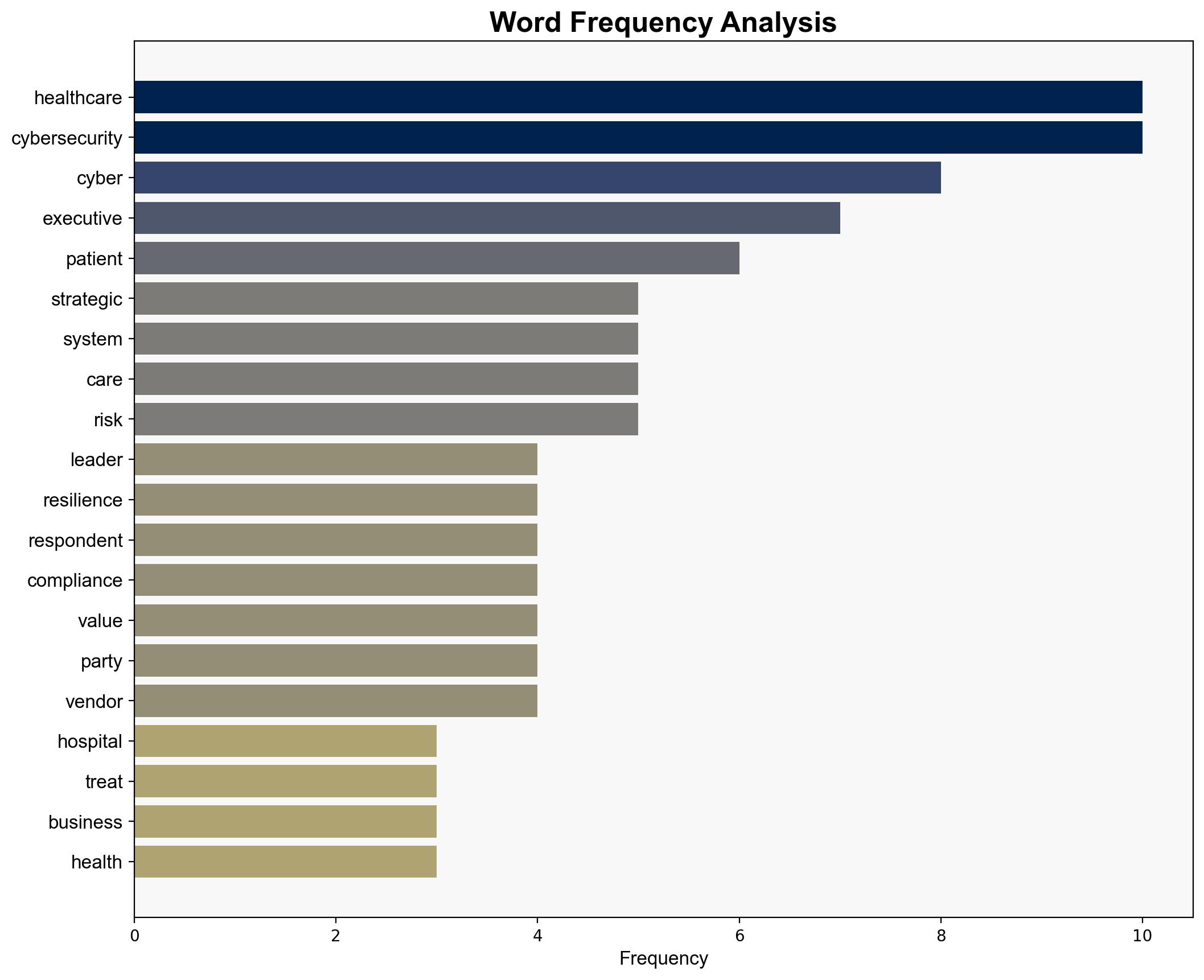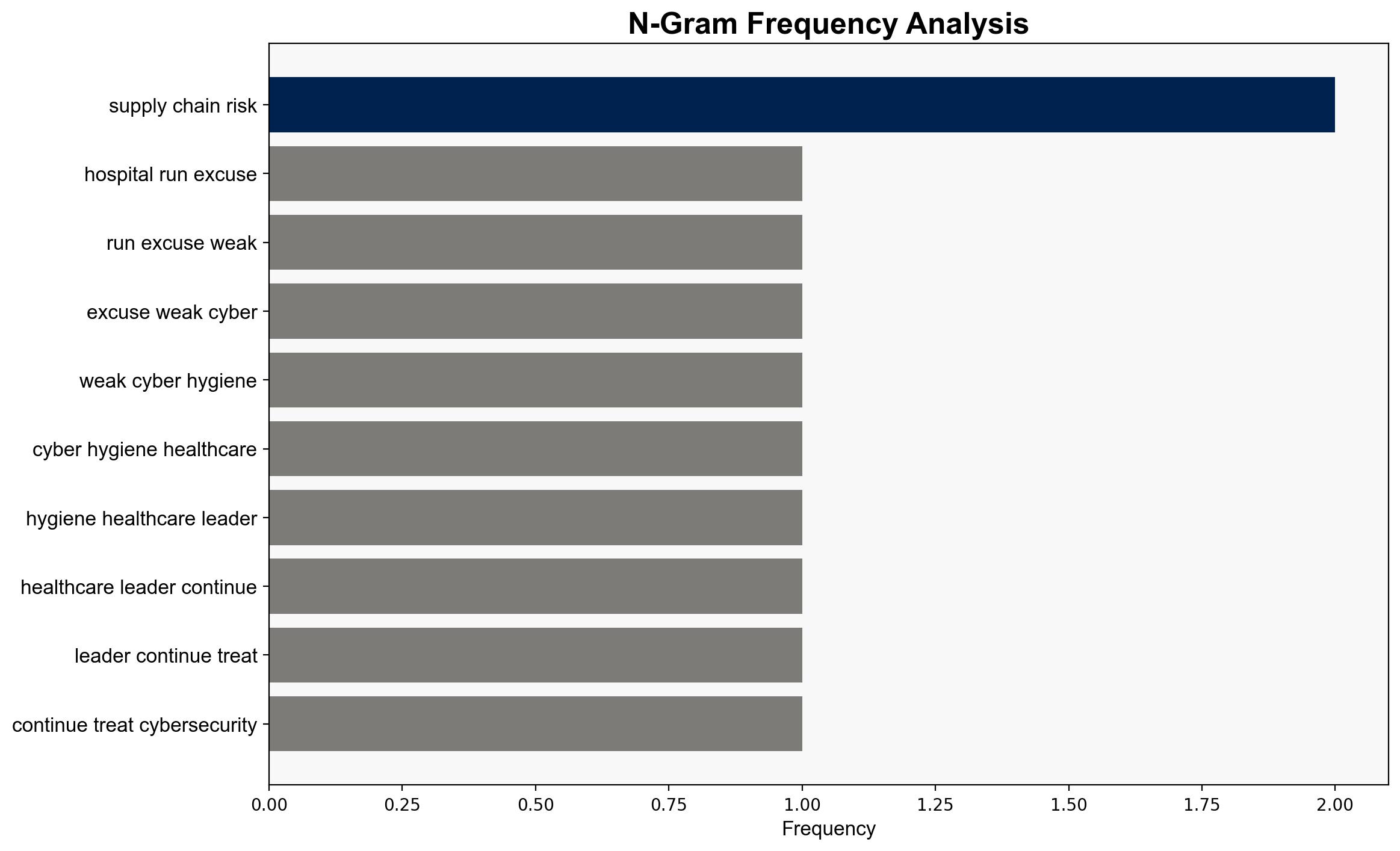Hospitals are running out of excuses for weak cyber hygiene – Help Net Security
Published on: 2025-11-07
Intelligence Report: Hospitals are running out of excuses for weak cyber hygiene – Help Net Security
1. BLUF (Bottom Line Up Front)
The strategic judgment is that hospitals’ cybersecurity weaknesses stem primarily from inadequate prioritization of cybersecurity as a strategic business function rather than just a technical safeguard. This hypothesis is better supported by the evidence, suggesting a need for a strategic shift in how healthcare organizations view and integrate cybersecurity. Confidence level: Moderate. Recommended action: Healthcare organizations should integrate cybersecurity into their core strategic planning and allocate appropriate resources to bridge the resilience gap.
2. Competing Hypotheses
1. **Hypothesis A**: Hospitals’ weak cyber hygiene is due to insufficient budget allocations and competing priorities, limiting their ability to enhance cybersecurity measures.
2. **Hypothesis B**: The primary issue is the perception of cybersecurity as a technical safeguard rather than a strategic business function, leading to inadequate integration into overall business strategies.
Using the Analysis of Competing Hypotheses (ACH) 2.0, Hypothesis B is better supported. The source text highlights that respondents prioritize cybersecurity as a business strategy to overcome challenges, suggesting a shift in perception is needed more than just budget increases.
3. Key Assumptions and Red Flags
– **Assumptions**:
– Hypothesis A assumes that increased funding alone can resolve cybersecurity issues.
– Hypothesis B assumes that strategic integration will naturally lead to better resource allocation and improved cyber hygiene.
– **Red Flags**:
– Potential bias in responses from executives who may underreport internal challenges.
– Lack of specific data on the effectiveness of current cybersecurity measures.
4. Implications and Strategic Risks
If hospitals continue to view cybersecurity as a secondary concern, they risk increased vulnerability to cyber incidents, potentially leading to compromised patient data and disrupted operations. This could escalate into broader economic impacts and loss of trust in healthcare systems. Conversely, integrating cybersecurity strategically could enhance resilience and innovation, such as AI-assisted diagnostics and remote monitoring, thereby improving patient care and operational efficiency.
5. Recommendations and Outlook
- **Mitigation**: Develop a comprehensive cybersecurity strategy that aligns with overall business objectives. Prioritize IAM investments and real-time threat detection.
- **Exploitation**: Leverage cybersecurity as a value creator by integrating it into digital transformation initiatives.
- **Scenario Projections**:
– **Best Case**: Hospitals achieve robust cybersecurity integration, reducing incidents and enhancing patient trust.
– **Worst Case**: Continued neglect leads to severe breaches, damaging reputation and financial stability.
– **Most Likely**: Gradual improvement as awareness grows, but significant gaps remain without strategic shifts.
6. Key Individuals and Entities
– Nana Ahwoi (EY Americas Consumer Health Cybersecurity Industry Leader)
7. Thematic Tags
national security threats, cybersecurity, healthcare, strategic business integration





